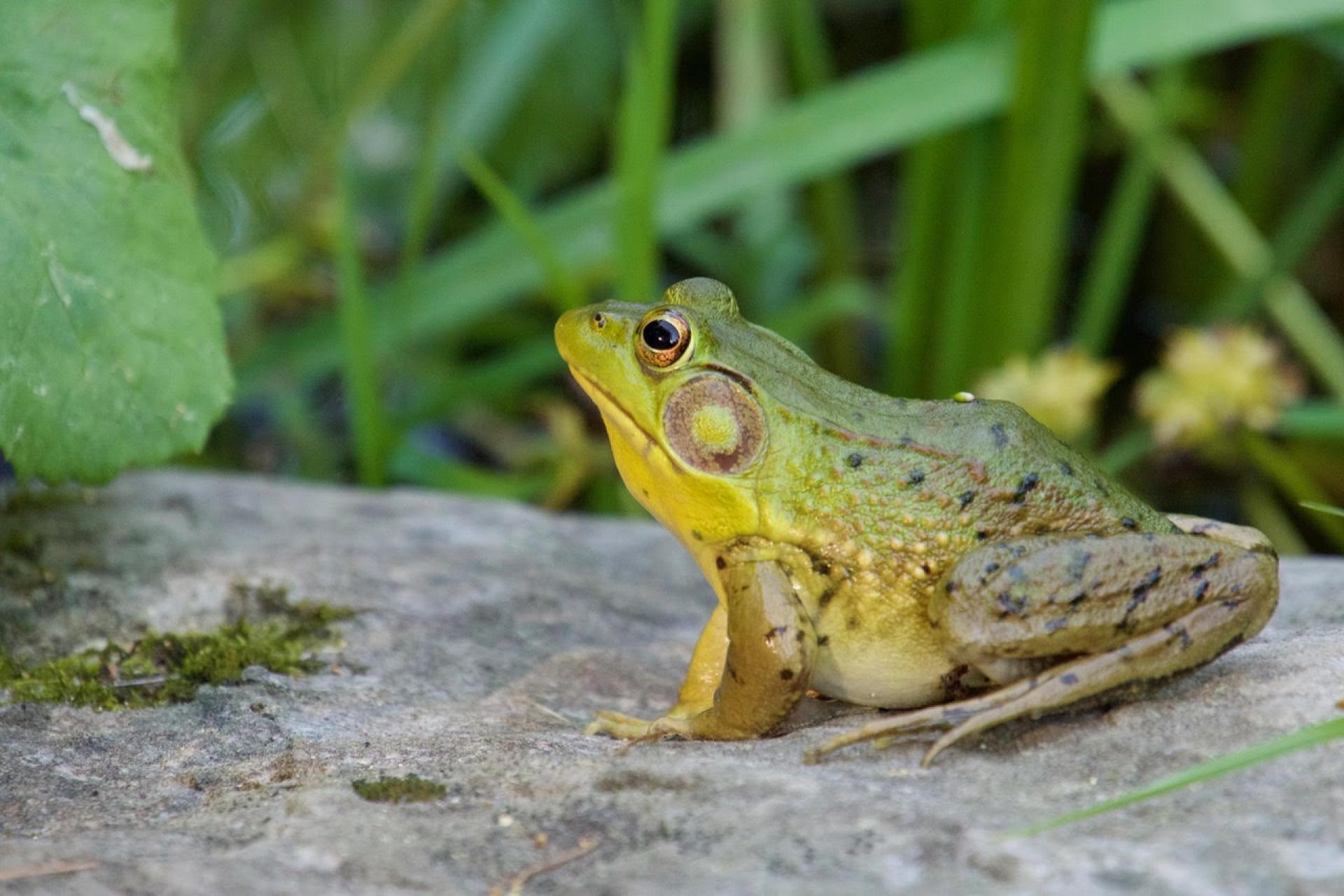You are here
A Welcome Mat for Wildlife
A Welcome Mat for Wildlife
By Thomas Christopher
Until recently, my understanding of naturally based gardening has been plant-centric and frankly reactionary. To the extent it’s possible, I’ve tried to restore whatever vegetation once flourished on the local landscape, with the idea that this would invite the return of native wildlife. After talking to Kat Tancock and Domini Clark, however, I’m taking a more imaginative view.
Both of these women are journalists based in Ontario, Canada. Kat lives in Toronto, and Domini in Hamilton. It was in a remote shepherd’s hut in Wales, though, where she was vacationing that an epiphany came to Domini. While she was there, she picked up a book, “Wilding: Restoring Nature to Our Farm” by Isabella Tree. In this, Tree describes how she and her husband decided to transition the 3,500-acre family estate from marginally profitable agriculture (the land had been farmed intensively for centuries) back to a more natural state.
This story of Tree’s program and its success spoke to Domini Clark. The next year she returned to Wales with her friend Kat Tancock to explore that region’s “rewilding” initiatives, and Tancock became intrigued as well. Then the pandemic closed in and both women found themselves bored by enforced isolation. They decided to share their enthusiasm and in March of 2021 they founded an online magazine, “Rewilding” (www.rewildingmag.com).
I had been given a copy of Isabella Tree’s book, but it seemed as irrelevant to my middle class North American experience as reruns of Downton Abbey. When I spoke to Kat and Domini last month, though, they told me that the rewilding movement – it has exponents all around the globe – actually arose from the work of American conservation biologists back in the 1990s. Several members of that scientific community had come to the conclusion that simply preserving nature in isolated preserves was inadequate. In particular, such islands could not support sufficient numbers of many of the wildlife species to maintain genetically diverse populations.
These pioneers began promoting what Kat and Domini described as “the three C’s”: maintaining “cores” such as national parks, but also creating geographical “connections” between these refuges so that wildlife could transit from one to another, and finally, restoring the “carnivores” that had too often been eliminated but which are essential for keeping the plant-eaters in a healthy balance with their environment.
Of course, maintaining a vigorous and diverse native plant flora is also essential to the success of any such program, which is where, according to Kat and Domini, gardeners come in. For to their way of thinking, rewilding, to reach its potential, must include small landscapes as well as large.
Both women were quick to point out that they are not conservation biologists. That, however, seems to me an advantage. They include interviews with a wide range of such scientists in “Rewilding,” but Kat and Domini frame this information in language that a lay person such as myself finds easy to understand. I also appreciate “Rewilding’s” focus on personal stories, such as Kenyan university undegraduate Lamech Opiyo, who has been recruiting both the members of his Rotary Club and secondary school students to for projects such as removing invasive plants from a national forest to enhance the habitat for native wildlife.
Another emphasis of “Rewilding” is that when we invite wildlife back into our landscapes we must accept a different relationship with it. For example, a recent article contributed by Shelley Marie Alexander a professor in the Department of Geography at the University of Calgary and an internationally recognized canid specialist addresses the furor surrounding widely publicized reports of coyote bitings in Canada. Overwhelmingly, Alexander has found, the attacks were connected with histories of people feeding of the animals. As Kat put it to me, even as we invite wildlife into our landscapes, we have to let it remain wild.
In browsing the magazine, I found particularly inspiring Alexandra De Vylder’s article to the June 2022 issue of “ Rewilding” about programs in five cities. Haikou, China, she reported, by re-establishing mangrove forests and constructing wetlands along its banks cleansed the polluted and formerly concrete enclosed Meishe River. To date, 514 wetland animal species and 439 plant species have spontaneously moved in. Just as cities have become home to the majority of the global human population, so too they can become centers for rich and diverse natural communities.
To hear more of my conversation with Kat Tancock and Domini Clark, listen to the Berkshire Botanical Garden’s Growing Greener podcast at at berkshirebotanical.org/growinggreener.
Be-a-Better-Gardener is a community service of Berkshire Botanical Garden, located in Stockbridge, Mass. Its mission, to provide knowledge of gardening and the environment through a diverse range of classes and programs, informs and inspires thousands of students and visitors each year. Thomas Christopher is a volunteer at Berkshire Botanical Garden and is the author or co-author of more than a dozen books, including Nature into Art and The Gardens of Wave Hill (Timber Press, 2019). He is the 2021 Garden Club of America's National Medalist for Literature, a distinction reserved to recognize those who have left a profound and lasting impact on issues that are most important to the GCA. Christopher’s companion broadcast to this column, Growing Greener, streams on WESUFM.org, Pacifica Radio and NPR and is available at berkshirebotanical.org/growinggreener.
Help Our Garden Grow!
Your donation helps us to educate and inspire visitors of all ages on the art and science of gardening and the preservation of our environment.
All Donations are 100 percent tax deductible.


